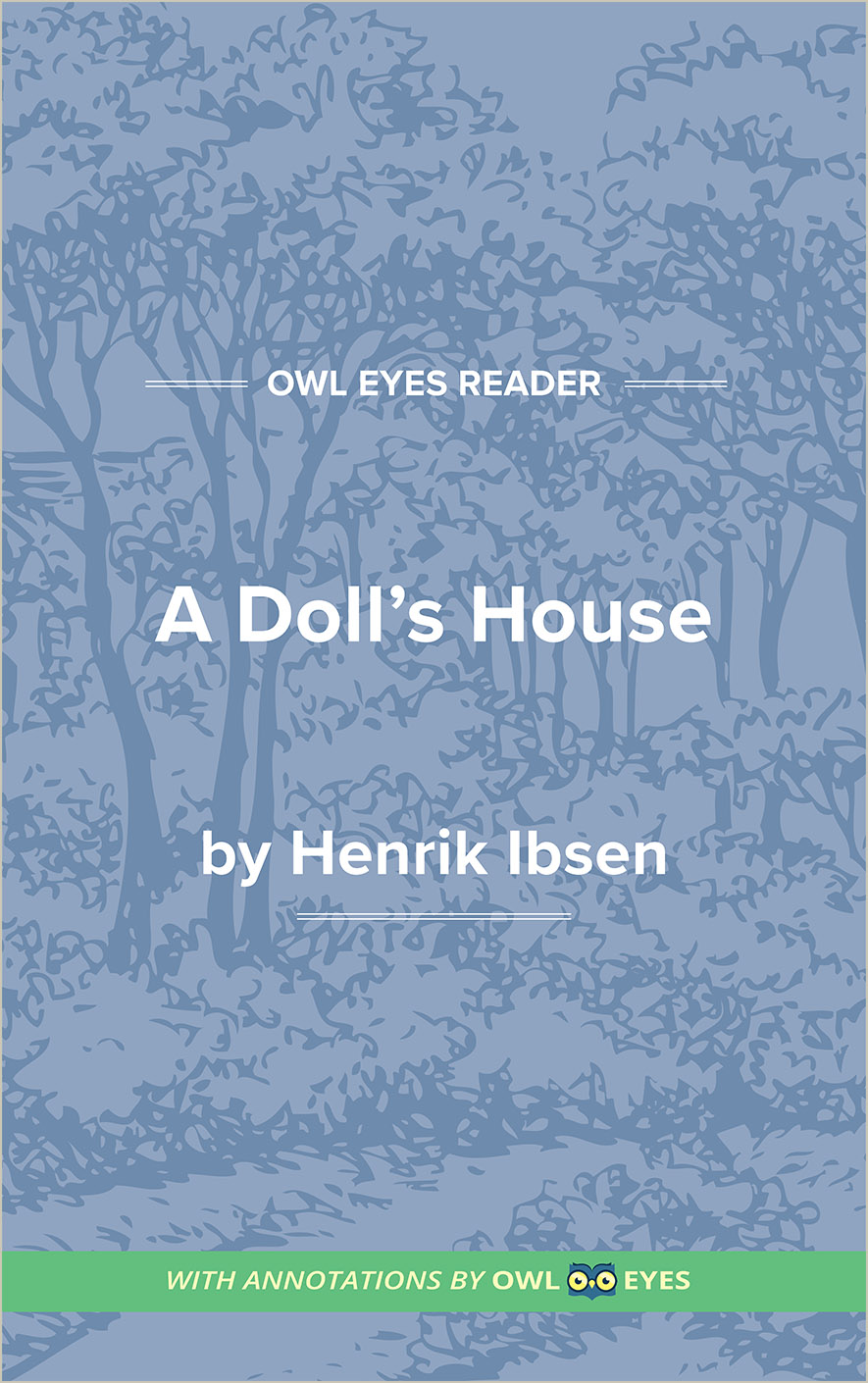- Annotated Full Text
- Literary Period: Realism
- Publication Date: 1879
- Flesch-Kincaid Level: 3
- Approx. Reading Time: 2 hours and 13 minutes
Nora and her husband Torvald have a seemingly happy marriage. However, Nora has a dark secret that Torvald does not know: when Torvald fell ill, Nora illegally borrowed money and forged her father’s signature to pay for his treatment. When Torvald fires Krogstad, the man Nora borrowed money from, Krogstad threatens to unravel her secret. Nora believes that if her husband discovers her debt, he will sacrifice himself for her, and she tries desperately to prevent this from happening. But when his real reaction to her treachery is neither valiant nor loving, Nora’s illusions about her perfect husband and beautiful life are shattered. While this play has been heralded as a feminist dialogue with controversial gender roles, Ibsen claimed that it was not a tale of women’s rights or a feminist story; rather, it is a story about human rights. Both the husband and the wife are confined by the social roles that they have to play and thus not at fault for their cruelty towards one another. When it was released, critics rejected it claiming that it undermined the institution of marriage. However, the play is now recognized as not only a portrayal of very real people and their issues, but also one of the first plays to popularize realism. Irving uses colloquial language, real-life situations, and focuses on everyday people rather than the rich or powerful. These inventions transformed the theater into a space where art could portray commonplace social issues and interrogate Victorian morals.
- Annotated Full Text
- Literary Period: Realism
- Publication Date: 1879
- Flesch-Kincaid Level: 3
- Approx. Reading Time: 2 hours and 13 minutes

